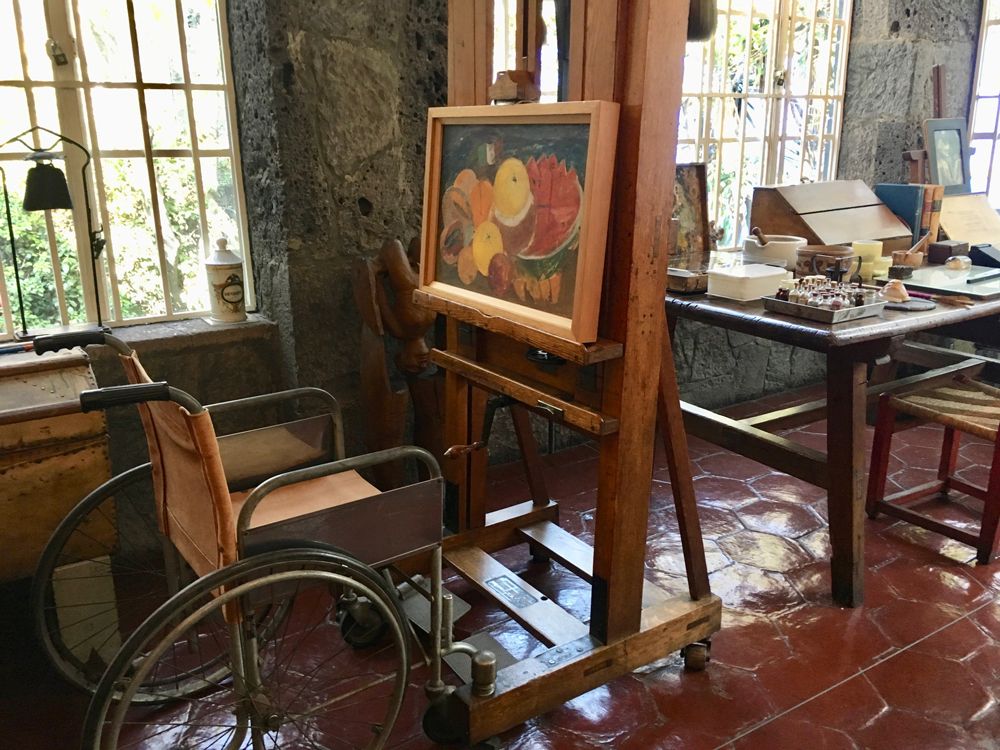The many reasons to visit vibrant Mexico City

Credit to Author: Mary Beth Roberts| Date: Sat, 12 Oct 2019 13:14:58 +0000
Frida Kahlo’s face scowls from T-shirts, keychains, notebooks, shopping bags and even the toes of sneakers. Those famous heavy eyebrows and severe updo are everywhere along the streets of Colonia del Carmen. So are the peasant blouses familiar from her self-portraits, and the bold floral shawls, and the dramatic earrings, often worn by the many, many women paying homage to the late Mexican artist.
Call it the full Frida, which seems to be the dress code here at the Casa Azul. The cobalt-blue house Kahlo called home is now a museum to the artist, filled with her paintings, art supplies and the wheelchair she used after the terrible accident that left her in agony for much of her life. It’s easy to find—just follow the endless lineups to the museum’s bright green doors.
Kahlo (1907–1954), whose greatest work was the manufacture and promotion of her own image, would be pleased.
A mosaic depicting traditional legends of the underworld at the Museo Diego Rivera Anahuacalli in Coyoacán.
But you don’t have to trek all the way down to Coyoacán, a folksy village that has merged into Mexico City, to experience art here in the Distrito Federal. It’s everywhere, and it’s one of the best reasons to visit this magnificent city.
With a population of nearly nine million people, the Ciudad de Mexico (abbreviated by everyone as CDMX) is the most populous city in the Americas. It’s among the highest, too, with elevations up to a lofty 3,930 metres, and is built on a former lake ringed by mountains that trap exhaust fumes and thunderstorms in a giant bowl. It often gets a bad rap for its crime, its pollution, its dizzying altitude, its horrendous traffic and its stickily sweltering weather.
Pre-Hispanic sculptures at the Diego Rivera museum.
But the city has done a lot in recent years to reduce both pollution and crime. (The traffic, though, is as nightmarish as ever.) Indeed, the neighbourhoods most tourists visit are no more dangerous than any big metropolis; some, like Polanco and Condesa, are even traversed by elegant Parisian-style boulevards and dotted with graceful parks where dogwalkers like to stroll.
Contrary to its rough reputation, CDMX is a beautiful, hospitable and sophisticated city, one of the world’s most exciting culinary destinations and one of its greatest places to enjoy art, too.
Wherever you go, there’s a museum, a ruin, a mural or a statue. When people complain about the weather and the crime, they forget to tell you just how art-filled this dynamic city is.
For instance, the entire neighbourhood of Centro, the city’s historic centre, has been named a UNESCO World Heritage Site. In a corner of the main square known as the Zócalo are the ruins of the Templo Mayor, which dates back to the 14th century, when this was still the Aztec city of Tenochtitlan. The rest of the square, which is officially called the Plaza de la Constitución, is surrounded by the Gothic cathedral, baroque National Palace and colonial Federal District buildings, among others.
A self-portrait by Frida Kahlo, one of several works by the artist at the Museo de Arte Moderno in Chapultepec Park in Mexico City.
Even in the bustling business centre of CDMX, with its modern towers, stylish boutiques and trendy restaurants, art is everywhere, from the monuments along the grand Paseo de la Reforma to the vast Chapultepec Park with its many museums, including the Museo de Arte Moderno.
Further afield, there are the pyramids and other ruins of pre-Hispanic Teotihuacan on the city’s outskirts. In Coyoacán, there’s the Central City University Campus, another UNESCO site, with its ornate Central Library, whose entire facade is a mural by Juan O’Gorman, and the Olympic Stadium that boasts a huge mural by Diego Rivera.
The Central Library located on the Ciudad Universitaria campus is covered with a mural called Historical Representation of Culture by Mexican artist Juan O’Gorman. In 2007, UNESCO declared the library, along with the central campus, as World Heritage.
Rivera (1886–1957), of course, is as famous now for the years he was Kahlo’s husband and artistic foil as he was for his communist politics and his muscular style of social realism in art. His best-known works are his murals, which often attack capitalism and the establishment, and can be seen, ironically enough, in many public buildings, including the Palacio Nacional.
But one of the best places to appreciate what Rivera meant to Mexico is to visit the Museo Diego Rivera Anahuacalli, not all that far from Kahlo’s Casa Azul in Coyoacán.
You won’t see the long lineups and kitschy tourist tat that surrounds the Casa Azul here. Perhaps that’s because this building is a bit foreboding. Designed by Rivera himself, it is based on the structure of the Aztec underworld and built from funereal black volcanic stone. There are no colourful paintings of watermelons, no cheerful potted plants, no laughing influencers in peasant blouses. Instead, there are hundreds of moodily lit pre-Hispanic sculptures, as well as mosaics embedded in the floors, walls and ceilings, some depicting Aztec motifs, others, symbols like the hammer and sickle of the USSR.
The foreboding facade of the Museo Diego Rivera Anahuacalli, whose design is based on the Aztec concept of the underworld.
It is, in a word, haunting.
Kahlo and Rivera, of course, are not the only artists in Mexico City. They may not even be the best. But they created a lasting artistic legacy in this incredible city they called home, and one that draws us in, no matter what the naysayers say.